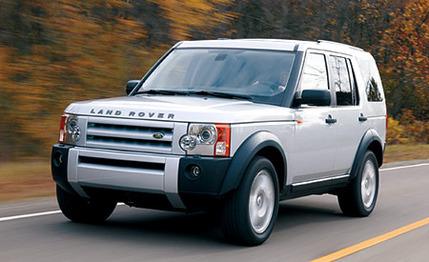 Road Test
Road Test
When the Land Rover Discovery first appeared in Europe in 1989, the Berlin Wall hadn't yet fallen, SUV sales were only beginning to mushroom here in the States, and clear colas were still a couple of years away. The luxury-SUV segment, so popular today, had about three members: the Land Rover Range Rover, the Toyota Land Cruiser, and the Jeep Grand Wagoneer.
By the time Land Rover shipped over the Disco for 1995, the luxury-sport-ute segment was growing. Although not as decadent as the Range Rover, the Discovery conveniently filled the lower end of the luxury segment for Land Rover. Buyers bit, gobbling up about 15,000 in that first year. Turns out the Disco bit back, by being about as reliable as a British car built in the '70s on free-Guinness Fridays. Revisions to the Disco sought to recapture the faith of a disgruntled buying public, but the latest Discovery was enough like the original to trigger painful flashbacks. Clearly, an all-new design was necessary.
The 2005 LR3 is the much-needed replacement for the Discovery. Land Rover seems to want buyers to forget the Discovery, so henceforth it will be called the LR3. In other, perhaps less discriminating lands, the LR3 will be known as the Discovery 3. We can understand why they might want to separate the two vehicles, as the LR3 is a far more advanced beast than the Disco.
Built on a stiff steel frame that buttresses a rigid body whose styling is a more modern interpretation of the Discovery, the LR3 imparts a satisfying feeling of solidity and significance. Unfortunately, that hefty feel and sturdy structure are evident in the eye-popping 5686 pounds of avoirdupois. The mass becomes a bit less satisfying when you burden the LR3 dynamically by doing things like turning the steering wheel or coming down on the throttle.
The all-aluminum V-8, a bored-out version of the 4.2-liter that can be found in all current Jags except the X-type, is smooth and unobtrusive, and has a willing dance partner in its six-speed automatic. Unfortunately, the two prefer slow dancing to krumping. With 300 horsepower, 83 more than the 4.6-liter, Buick-derived pushrod V-8 that did duty in the Disco, the new 4.4-liter DOHC engine is even 18 horses more powerful than the BMW-sourced 4.4-liter found under the Range Rover's bonnet. But pulling all that weight, it takes 8.2 seconds to clear 60 mph, which is slower than most of the LR3's competition but faster than the outgoing Discovery's 10.1-second amble to the same speed and even the Range Rover's 9.6 second mosey.
Roll out into the left lane, and the LR3 will pass with more confidence than the previous model as the six-speed finds the appropriate gear for the situation. If you find there isn't enough room to pass, stomp on the predictable and strong brakes that will bring you to a stop from 70 mph in 173 feet, not too shabby for a nearly three-ton beast. When considered in relationship to its gene pool, the LR3 isn't exactly slow, but there are faster and lighter sport-utes that are the same size and trade for similar cash.
On-road demeanor is far more refined than in the Discovery, and if you were able to drive the LR3 blindfolded, you might think you were in the more expensive Range Rover. Wind and road noise are restrained at highway speeds; the LR3 registered a low 66 dBA at 70 mph. The steering is a bit heavy and slow, but then again so is the whole package, so it's well-matched. Even the harshest dirt roads are taken in stride, thanks to the aforementioned structure and the adjustable air suspension that ditches solid axles in favor of a fully independent setup.
Hard-core off-roaders are typically turned off by independent suspensions because they generally have limited wheel travel and articulation (the ability to keep the tires in contact with the earth in off-road situations) when compared with traditional solid axles. Land Rover claims its control-arm suspension matches the articulation and bests the wheel travel of its previous solid-axle design. To make the most of available grip, the LR3 sent to our offices had the optional Heavy-Duty package that adds a locking rear differential to divert power to the rear wheel with more traction. To maximize ground clearance, the air suspension can be set to lift the body for 9.5 inches of ground clearance. The LR3 can be adjusted for about any situation, and it even includes Terrain Response, which tailors the LR3's reactions to different surfaces.